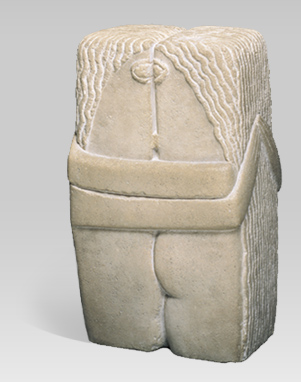|
|
In 1907 Brancusi began to carve his materials directly, pioneering a new approach to sculpture. This broke with the accepted practice of modeling in clay and sending the resulting model to be enlarged in marble by specialist craftsmen. Brancusi modified these practices to his own personal vision. He worked briefly in the studio of Auguste Rodin but soon moved away from the realist approach to sculpture in which he had been trained. Instead he adopted the idea of the symbolic narrative and understood his works as forms of universal significance.
This is immediately evident in The Kiss (1916). The embracing couple are schematic figures, acting as a sign of ideal union. The woman and man are almost, though not quite, indistinguishable. Like the medieval masons, he carved the block himself—hence his works are largely of a manageable scale—and believed that the completed sculpture emerged from a cooperation with the material. In the different versions of The Kiss, the original block of stone from which the figures are carved remains visible, encouraging concentration on the ideals embodied by the couple rather than their individual selves.
Contantin Brancusi, The Kiss, 1916. Limestone, 23 x 13 1/4 x 10 inches. Philadelphia Museum of Art, The Louise and Walter Arensberg Collection, 1950. © 2004 Artists Rights Society (ARS), New York/ADAGP, Paris.
|
|

